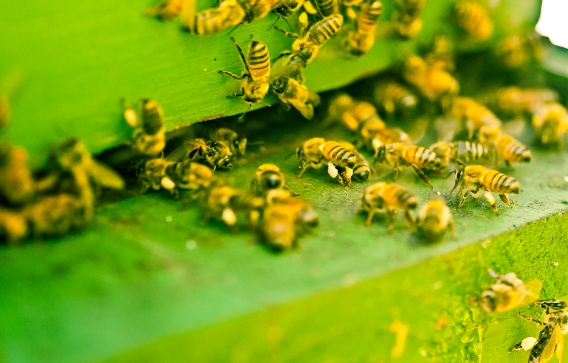
- U.S. beekeepers report record honeybee deaths, with over 60% colony losses this winter — potentially the worst in history.
- Economic losses hit $139 million, honey prices rose 5%, and many beekeepers face financial ruin.
- Pesticides, especially neonicotinoids, are a major suspect, with studies showing multi-generational harm to bee reproduction.
- California’s almond industry, worth $11 billion, faced severe pollination shortages due to bee die-offs.
- Scientists warn of cascading agricultural impacts, including higher costs and lower yields for key crops.
American beekeepers are sounding the alarm as honeybee deaths reach unprecedented levels, with commercial operations reporting an average loss of over 60% of their colonies this winter — potentially the worst die-off in U.S. history.
The economic fallout is staggering: losses are valued at $139 million, honey prices have surged 5%, and many beekeepers face financial ruin. Scientists are urgently investigating the causes, with pesticides emerging as a key suspect. A recent University of California, Davis study found that bees may need multiple generations to recover from just one pesticide application, raising concerns about long-term damage to these vital pollinators.
Beekeepers on the brink
The crisis became apparent during this year’s almond pollination season in California, where millions of hives are transported annually to support the state’s $11 billion almond industry. Beekeepers reported massive shortages, with some orchards left under-pollinated.
“Something real bad is going on this year,” said Scott McArt, an entomologist at Cornell University. “We’ve been seeing high losses year after year, but if anything, it’s getting worse, which is troubling.”
One anonymous beekeeper surveyed by Project Apis m., a nonprofit tracking colony health, described the financial devastation: “The equity on the house is gone, our retirement is gone, the family member’s money is gone. All that’s left are empty boxes. We don’t even have the dead bees. They are gone too.”
Pesticides: A lingering threat
While multiple factors — including parasitic varroa mites, viruses, and habitat loss—are under investigation, pesticides remain a critical concern. A 2021 UC Davis study revealed that bees exposed to neonicotinoids, a common class of insecticides, suffered a 44% drop in reproduction. Worse, the effects persisted across generations, with population growth rates plummeting by 72% after repeated exposure.
“One application in the first year and one in the second — that’s standard exposure,” said lead researcher Clara Stuligross. “Even then, we saw strong results that added up, each exposure reducing fertility.”
Neonicotinoids, which are chemically similar to nicotine, are widely used in U.S. agriculture and can linger in soil and plants long after application. Critics argue that regulatory agencies have underestimated their cumulative impact on pollinators.
Economic and agricultural fallout
Honeybees contribute an estimated $20 billion annually to U.S. agriculture by pollinating crops like apples, berries, and almonds. With colony numbers plummeting, farmers may soon face higher costs and lower yields.
“I don’t want to be a fear-monger, but this level of loss could mean increased bankruptcies among beekeepers,” warned Brandon Hopkins, a pollinator ecologist at Washington State University. “"Growers of crops downstream from almonds may need to scramble if the beekeeper they’ve relied on to pollinate their apple trees, for example, isn’t in business anymore.”
Despite the crisis, USDA research capacity has been hampered by staffing cuts, leaving universities like Cornell to fill the gap. Scientists are now analyzing bee samples to pinpoint the primary drivers of this year’s catastrophic losses.
The honeybee crisis underscores a broader challenge: modern agriculture’s reliance on chemicals that may harm the very pollinators it depends on. While habitat restoration and mite control offer partial solutions, the long-term effects of pesticides demand urgent attention.
For now, beekeepers are left to absorb unsustainable losses, but the long-term impact could be even more devastating. As McArt put it: “Without their crop pollination we wouldn’t be doing well at all.”
Sources for this article include:
Please contact us for more information.



















